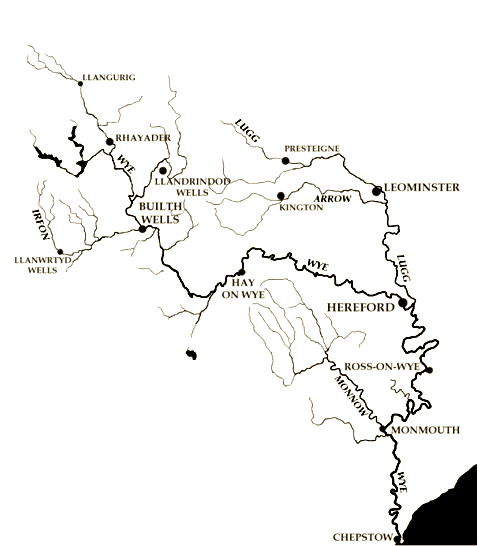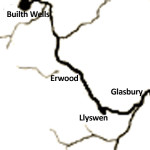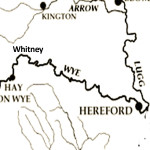The River Wye Fishery can be divided into 5 sections
The source of the Wye is in the Welsh mountains at Plynlimon. It flows past several towns and villages including Rhayader, Builth Wells, Hay-on-Wye, Hereford (the only city on the River Wye), Ross-on-Wye, Symonds Yat, Monmouth and Tintern, meeting the Severn estuary just below Chepstow. Its total length is 215 km. It is joined by several large tributaries that are large enough to be rivers in their own right, these are the Elan, the Ithon, the Irfon, the Lugg and the Monnow, plus many smaller tributaries.
The Wye is a Site of Special Scientific Interest, a Special Area of Conservation and one of the most important rivers in the UK for nature conservation. Much of the lower valley is an Area of Outstanding Natural Beauty. The Wye used to be considered by many to be one of the best rivers for salmon fishing in the United Kingdom, outside of Scotland. However, in recent years the runs of salmon in the Wye have declined dramatically. In 1967 the Wye rod catch was 7,864; as recently as 1988 it was 6,401 but by 2002 it was only 357, a low from which it is recovering only very slowly despite the extensive habitat improvement work carried out by the Wye and Usk Foundation that was set up to restore the spring salmon runs. The Wye was particularly famous for its large “spring” salmon that had spent three or more years at sea before returning to spawn (Multi Sea Winter). They entered the river between January and June and sometimes reached weights of over 50 lbs, the largest recorded being 59 lbs 8oz landed after a long fight by Miss Doreen Davey from the Cowpond Pool at Ballingham on 13 March 1923. The last recorded 50 lb rod-caught salmon from the Wye was taken in 1963 by Donald Parrish and weighed 51 lbs 8oz. These large spring salmon have virtually disappeared over the past two or three decades although the occasional 30lber is caught most years.


Above Builth Wells the river has an abundance of perfect pools and streams. Some years ago many large springers were caught on famous beats such a Llysdinam and Doldowlod. Above the Ithon confluence the river is about 30 yards wide, fast flowing and rocky, superb fly water but sometimes difficult wading in the channels.

Below Builth Wells, with the addition of the Irfon, the Wye carries on as a fast flowing river, alternating gravelly runs and pools with fast gutters and channels offering every type of challenge to the Salmon angler. Below Llyswen the river slows and becomes more majestic as it flows along to Glasbury.

As the Wye proceeds past Hay on Wye it is a majestic, meandering river, more uniform in depth but with some very deep holes. Here you will find many beats, the names of which will live for ever in the history of the Wye, especially at the peak of its spring catches.

A similar character to the previous stretch but as you approach Symonds Yat the river picks up speed with a succession of famous beats and pools, suitable for both fly and spinner. Often easy access and many can be safely fished from the bank.

In low water, after a spate these beats below Monmouth can be as good as any beats on any river. Set beautifully in the lower Wye Valley where the steep wooded banks narrow forming the lower Wye gorge. This lower section of the river Wye below Monmouth also benefits from being close to the limit of the tide at Bigsweir.
